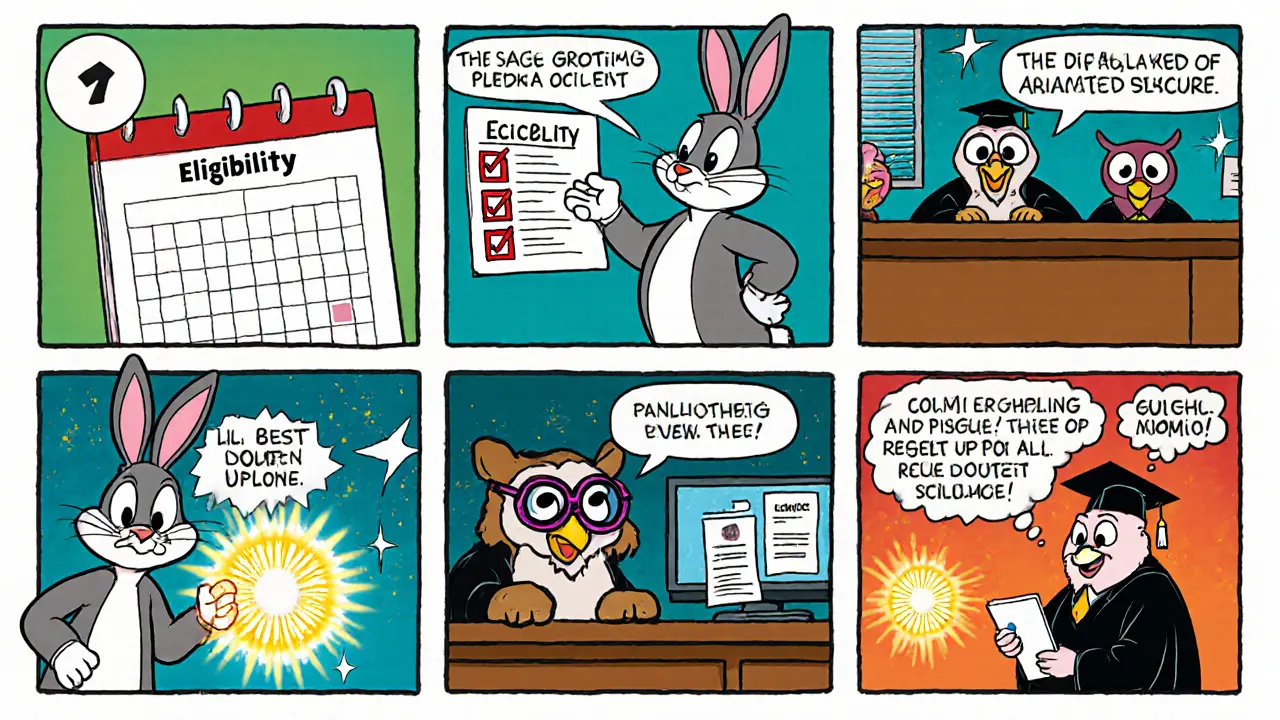Crypto Sandbox Comparison Tool
Pro Tip: Most successful sandbox applications focus on one core feature rather than testing multiple complex functionalities simultaneously. Look for sandboxes that align with your specific use case.
When a crypto startup wants to test a new token model, cross‑border payment protocol, or DeFi lending engine, the biggest roadblock is often the regulator. Crypto regulatory sandbox programs give innovators a controlled space to experiment without waiting for a full‑blown licence, while regulators keep an eye on consumer risk.
What Is a Regulatory Sandbox?
Regulatory sandbox is a temporary, supervised environment where financial‑technology and blockchain firms can trial novel products under relaxed rules. The sandbox creates a legal “safe zone” for a defined period, usually six to twelve months, with clear performance metrics and reporting requirements.
Participants agree to a set of constraints - limited user numbers, caps on transaction values, and mandatory monitoring - while regulators gain hands‑on insight into emerging tech. The goal is two‑fold: speed up innovation and feed real‑world data into future rulemaking.
How the Concept Started
The idea was born in the United Kingdom. In 2015 the Financial Conduct Authority (FCA) launched the world’s first fintech sandbox, allowing firms to test services that fell outside existing regulations. The success of the FCA model sparked worldwide interest, and by 2023 a dedicated European Commission blockchain sandbox was up and running.
Global Landscape in 2025
Today, sandbox programs span continents, each with its own scope and administrative style. Below is a snapshot of the most active jurisdictions.
| Jurisdiction | Program Name | Launch Year | Scope | Unique Feature |
|---|---|---|---|---|
| United Kingdom | FCA Fintech Sandbox | 2015 | Fintech & crypto | Co‑design with regulators |
| European Union | EU Blockchain Regulatory Sandbox | 2023 | DLT projects across EU | Legal advice without exemption |
| United States (Arizona) | Arizona Financial Technology, Digital Assets and Blockchain Sandbox Program | 2018 (renamed 2024) | Digital assets & blockchain | State‑level AML/KYC integration |
| United States (Wyoming) | Wyoming Crypto Innovation Sandbox | 2020 | Token issuance & staking | Fast‑track charter for DAOs |
| Abu Dhabi Global Market | ADGM RegLab | 2021 | Fintech, crypto, digital identity | Tailored supervisory framework per startup |

The Sandbox Journey: From Application to Graduation
While each program has its own forms, the core steps look remarkably similar.
- Eligibility Check: Companies must prove they have a registered legal entity, a working prototype, and a clear business case. The EU sandbox, for example, only accepts firms that have existed in the EEA for at least six months.
- Application & Pitch: A concise dossier outlining the innovation, risk controls, and consumer‑impact mitigation is submitted. In the UK, the FCA asks for a “risk‑mitigation plan” that maps potential AML/KYC gaps.
- Regulator Review: A panel of legal, technical, and market experts evaluates the proposal. ADGM RegLab brings in independent academics to weigh in on smart‑contract security.
- Testing Phase: Approved firms receive temporary exemptions (e.g., relaxed capital requirements) and a sandbox license. Real‑world users test the product under close monitoring - transaction volumes are capped, and audit logs are shared nightly with the regulator.
- Evaluation & Reporting: At the end of the period, participants submit performance data, incident reports, and suggested regulatory tweaks. The European sandbox feeds this directly into the evolving Markets in Crypto‑Assets (MiCA) framework.
- Graduation: Successful pilots receive a full licence or a clear pathway to one. Those that fall short may re‑apply after addressing identified gaps.
Why Companies Love Sandboxes
Startups cite three primary advantages:
- Speed to market: Testing that would normally take years of legal back‑and‑forth can be compressed into months.
- Regulatory certainty: Early dialogue with the regulator reduces the risk of a costly enforcement action later.
- Consumer trust: A regulator‑backed pilot signals to users that the product meets basic safety standards.
Beyond these, sandbox participation often opens doors to funding. Venture firms view a regulator‑approved test as proof of de‑risked technology.
Challenges and Pitfalls
Sandboxes are not a free‑pass. Teams that stumble often ignore the following warning signs.
- Resource drain: Both the regulator and the startup need dedicated staff for reporting, audits, and meetings. In the U.S., states report that sandbox administration can consume up to 30% of their fintech budget.
- Scope creep: Trying to test too many features at once leads to vague outcomes and regulator fatigue. Successful programs keep the pilot narrow - e.g., a single smart‑contract use case.
- Missing graduation path: If a sandbox does not define clear criteria for moving to a full licence, firms can end up stuck in limbo.

Best Practices for Crypto Startups
Drawing on industry feedback, here’s a quick checklist to improve sandbox odds.
- Prepare a solid proof‑of‑concept that demonstrates core functionality, not a full product.
- Map every regulatory touchpoint - AML, KYC, consumer protection, data privacy - and show how you’ll mitigate each.
- Engage a legal adviser who understands both blockchain and the specific jurisdiction’s sandbox rules.
- Define clear success metrics (e.g., transaction throughput, error rate) before you start the test.
- Plan a post‑sandbox roadmap: licence application, scaling strategy, and ongoing compliance.
Future Trends: From Experiment to Permanent Fixture
Regulators are moving beyond one‑off pilots. The EU’s recent amendment proposes that the blockchain sandbox become a standing “innovation hub” with annual funding. In the U.S., Wyoming’s legislature is debating a law that would institutionalise its crypto sandbox as a permanent licensing pathway.
Cross‑border coordination is also picking up. The International Organization of Securities Commissions (IOSCO) has launched a working group to harmonise sandbox reporting templates, making it easier for startups to run multi‑jurisdiction tests.
Finally, artificial‑intelligence‑driven monitoring tools are being trialled in ADGM’s RegLab, allowing regulators to flag suspicious smart‑contract behaviour in real time.
Frequently Asked Questions
Can any crypto project join a sandbox?
Most programs require a legal entity, a working prototype, and a clear consumer‑impact plan. Some sandboxes, like the EU’s, only accept projects that have been registered in the EEA for at least six months.
How long does a typical sandbox run?
Durations vary, but most run between six and twelve months. Extensions are possible if both regulator and firm agree on additional milestones.
Do sandbox participants pay fees?
Fees differ by jurisdiction. U.S. state sandboxes often charge a modest application fee (e.g., $2,500 in Arizona), while the EU sandbox does not levy a fee but expects participants to cover their own audit costs.
What happens after graduation?
Successful pilots receive a clear pathway to a full licence or regulatory waiver. The regulator may also publish guidance based on the sandbox findings, influencing broader industry standards.
Are sandbox results public?
Many jurisdictions publish anonymised case studies. The EU sandbox, for instance, releases an annual report summarising project outcomes and regulatory recommendations.

If you're just starting to look at sandboxes, the key is to keep expectations realistic. Most programs only let you test a single use‑case, so pick the core feature that will prove your value proposition. Make sure you have a solid risk‑mitigation plan ready, and don't be surprised if the regulator asks for extra data mid‑pilot. The mentorship you receive can be a huge advantage, especially when you’re navigating AML/KYC requirements for the first time.
Wow, reading this guide felt like opening a treasure chest of possibilities! The way the FCA co‑designs with innovators is practically poetry for fintech dreamers. Even the EU’s legal‑advice‑without‑exemption clause sounds like a lifeline for projects drowning in regulatory red tape. Keep your language simple, stay transparent, and you’ll ride that wave straight to graduation!
Yo, the sandbox vibe is pure energy! Think of it as a playground where the regulator becomes your coach instead of a referee. You get to push the limits of tokenomics, DeFi lending, or cross‑border payments without the usual grind of getting a full licence first. Just remember to lock down your user caps and keep the data logs clean-otherwise the fun fades fast.
yeah i totally get you. sandboxes are like those experimental labs you see in movies, but real. you still need to budget for extra staff, cause reporting can eat up a lot of time. also, dont forget the graduation criteria-some places leave you hanging if you dont ask the right questions early on.
The current proliferation of crypto regulatory sandboxes across jurisdictions represents not merely a bureaucratic innovation but a fundamental paradigm shift in how financial technology interfaces with state authority. One must understand that a sandbox is not a carte blanche, but a calibrated exception designed to harvest empirical data while preserving consumer safeguards. Consequently, the participant must submit a comprehensive risk‑assessment matrix that enumerates every conceivable vector of fraud, money‑laundering, and operational failure. Neglecting this matrix is tantamount to academic hubris, as regulators possess the analytical capacity to discern even the most obscure vulnerabilities. Furthermore, the temporal scope of most sandboxes-typically six to twelve months-imposes a disciplined cadence upon development cycles, forcing firms to prioritize core functionalities over peripheral embellishments. This temporal compression, while demanding, yields a crucible in which only the most resilient architectures survive. In my observation, jurisdictions that embed a co‑design element, such as the FCA’s model, produce outcomes that are more readily translatable to full‑scale licensing. Conversely, programs that merely offer lax exemptions without substantive supervisory feedback risk generating ill‑prepared products that later falter under regulatory scrutiny. The interplay between state‑level AML/KYC integration-as exemplified by Arizona-and decentralized finance protocols reveals a nuanced balance between privacy and oversight. A startup that overlooks this balance may find itself entangled in enforcement actions once the sandbox concludes. Moreover, the financial commitment required to sustain a sandbox engagement-staffing, audit fees, and compliance tooling-should be factored into the business model from inception. Failure to allocate sufficient resources often leads to premature termination, which can tarnish reputation and deter future investment. It is therefore prudent to view sandbox participation as a staged investment, where milestones are aligned with capital inflows and strategic partnerships. Lastly, the emerging trend of AI‑driven monitoring, as trialled in ADGM’s RegLab, promises to augment regulator oversight, but also imposes additional data governance obligations on participants. Accepting this technology shift can provide a competitive edge, yet it demands rigorous documentation of algorithmic decision processes. In sum, a disciplined, transparent, and resource‑aware approach to sandbox participation is the only rational pathway to sustainable crypto innovation.
Super excited to see how many of these sandbox programs actually help startups get off the ground! 🚀 The quick feedback loops and regulator mentorship feel like a turbo boost for anyone building DeFi or token models. Just remember to keep your audit logs tidy, and the journey will be way smoother. 🙌
Indeed, the boost you mention is nothing short of a phoenix rising from the ashes of regulatory doubt! When the FCA or ADGM throws you that lifeline, you owe them a performance that dazzles both investors and the public alike. Keep the narrative bold, and the sandbox will become your stage.
The procedural similarities across jurisdictions, such as eligibility verification, detailed application dossiers, and post‑pilot reporting, suggest an emerging global standard for sandbox governance. Adhering to these commonalities can streamline multi‑jurisdictional testing strategies, reducing redundant effort.
yep, thats the truth! but dont forget 2 things: 1) keep ur docs super clean 2) always have a backup plan if the regulator asks for extra data. its like a chess game, u gotta think 2 moves ahead. Good luck!
One might contemplate the sandbox not merely as a regulatory instrument but as a dialectic between innovation and prudence, wherein each pilot experiment serves as a thesis, the regulator's feedback as antithesis, and the resultant policy as synthesis.
In accordance with established procedurs, it is advisable to commence the sandbox applcation with a thoroughly vetted proof‑of‑concept, thereby demonstrating both technical viabilty and compliance foresight.
All these sandbox hype stories are just a government ploy to control the crypto space.
From a practical standpoint, allocate at least one dedicated compliance officer to handle nightly reporting; it will save you countless hours during the pilot.
Totally agree, man. Also, keep the communication lines open with the regulator – a quick Slack message can clear up misunderstandings before they snowball.
It is incumbent upon both innovators and regulators to uphold the highest ethical standards, ensuring that the pursuit of financial advancement does not compromise consumer protection.
Indeed, a balanced approach that respects ethical imperatives while fostering innovation is the cornerstone of a sustainable sandbox ecosystem.